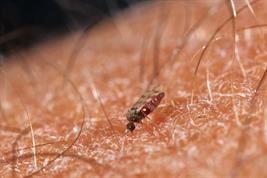25.03.2024

A newly developed test will make it easier to identify biting midges that can transmit dangerous disease agents. In a recently published study, the authors present an innovative method for differentiating biting midge species known to transmit viruses causing serious diseases of ruminants such as bluetongue and Schmallenberg viruses. These diseases pose a major threat to the agriculture livestock industry Europe and can cause enormous economic losses. ZALF scientist and dipteran expert Dr. Doreen Werner was involved in the study.
Until now, it has been difficult to distinguish the various biting midge species that transmit the bluetongue and Schmallenberg viruses from each other and from non-vector species. The hematophagous females of these insects look very similar, and traditional methods of species identification are often time-consuming and require specialized knowledge. This has made it difficult for both authorities and scientists to effectively control and prevent outbreaks of these diseases.
In response, scientists at the Friedrich-Loeffler-Institute, together with ZALF and the University of Strasbourg, have developed a new genetic method that can be used to quickly and accurately identify different biting midge species. The method is based on the analysis of a specific gene that is different in each biting midge species. By analyzing more than 4,000 genetic records from a publicly available database, the team was able to develop a test that detects all known vector species of these viruses within a certain biting midge group. The new test is exceptionally accurate, outperforming previously used methods.
This development is an important step in the surveillance and control of biting midge-borne diseases. Researchers and animal health authorities will be able to detect potential outbreaks more quickly and take more targeted control and prevention measures. This is particularly important as climate change and global warming could increase the risk of these diseases spreading to new regions.
The study highlights the importance of combining classical taxonomy and genetics in solving problems that affect both agriculture and public health. The research group plans to further refine the methods and apply them to other groups of disease vectors to enable even broader application in monitoring and controlling disease outbreaks.
Funding:
This research was funded by the German Federal Ministry of Food and Agriculture (BMEL) through the Federal Office for Agriculture and Food (BLE), grant number 281B101816.
The text was created with the help of artificial intelligence and carefully reviewed and revised under the aspects of AI regulations at ZALF. The adoption of the text is at your own risk.
Further Information:
